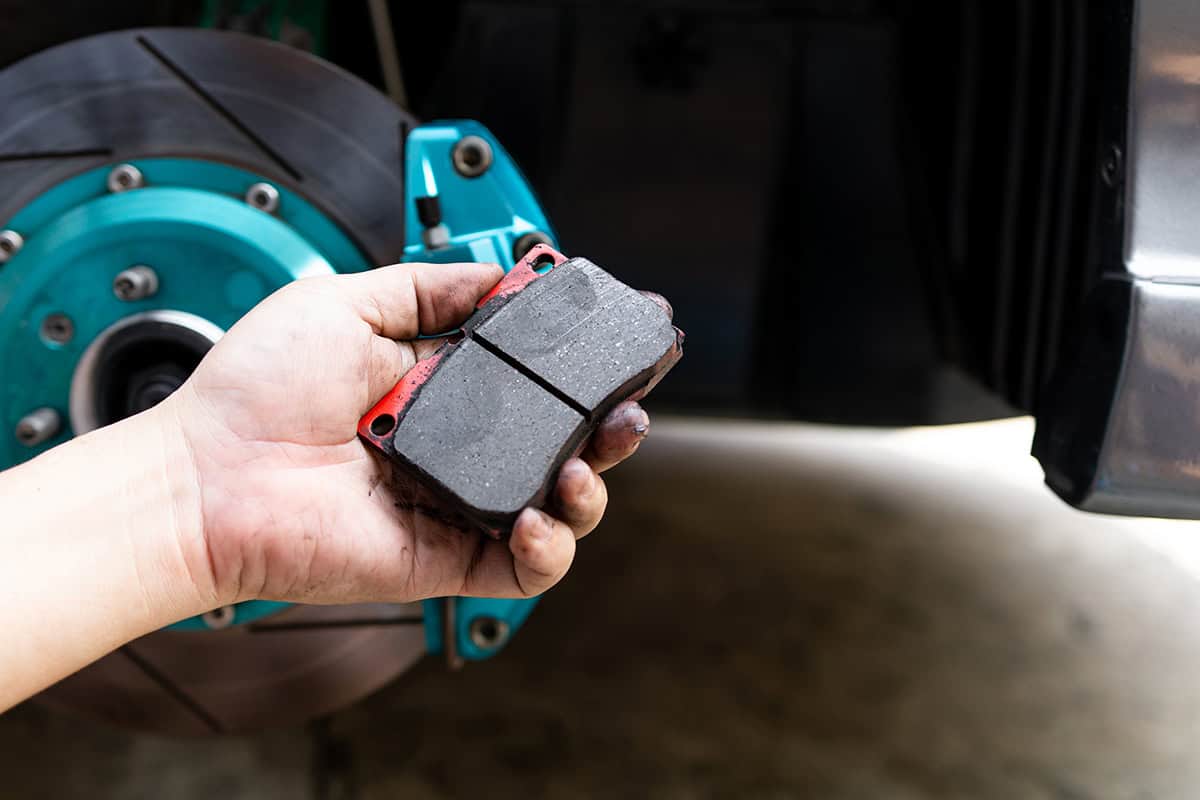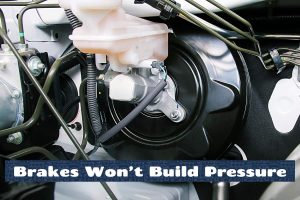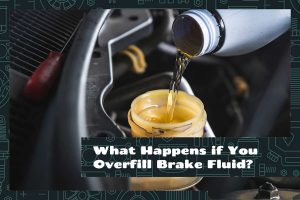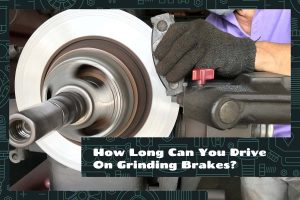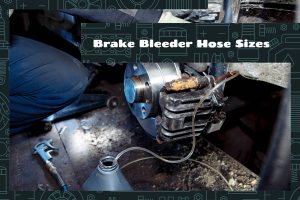Brake pads bring your car to a halt safely and efficiently. When you press the brake pedal, these pads create friction against the brake rotors, slowing down or stopping the vehicle. As time goes on, this friction causes the brake pads to wear down, affecting their thickness performance.
This guide will go over brake pad thickness. We’ll explore its significance and how to choose the right brake pad size, as well as provide a handy thickness chart for reference.
Anatomy of Brake Pads
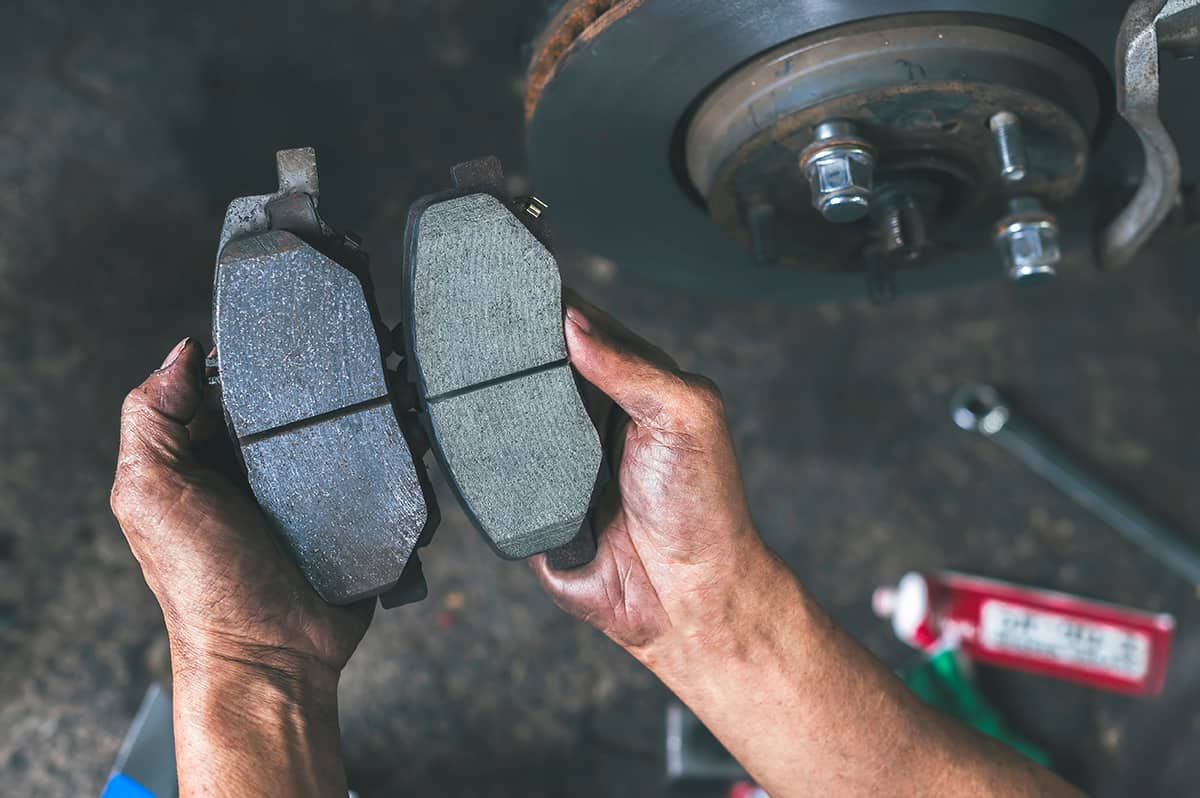
Brake pads are more than just slabs of material that help stop your car. Their structure and components are carefully designed to optimize performance and safety.
Key Components of a Brake Pad
- Backing Plate: The sturdy base where all components are attached.
- Friction Material: This is what comes into contact with the brake rotor. It’s specially formulated to resist heat and provide consistent stopping power.
- Shims: Thin layers sandwiched between the brake pad and the caliper to reduce noise and vibrations.
- Slots and Chamfers: These are grooves and bevels cut into the pad. They direct away dust, reduce noise, and prevent cracking.
How Brake Pads Work
When you push the brake pedal, brake fluid transfers this force to the brake caliper, which clamps the brake pads onto the rotors. The friction between the pads and the rotors slows down or stops the vehicle. This friction generates heat, which the brake pads are designed to handle. With repeated braking, the friction material on the pads wears down, reducing their thickness.
Importance of Optimal Brake Pad Thickness
The thickness of brake pads is directly linked to how effectively your car stops when you hit the brakes.
1. Safety Considerations
Thin brake pads can’t generate the same amount of friction as they once could. Reduced friction means longer stopping distances. If your pads get too thin, metal might touch metal, risking damage to the rotors and compromising braking efficiency.
2. Impact on Brake Performance
Optimal thickness ensures that there’s enough friction material to interact with the rotors. As the pads wear down, you might feel a decrease in braking responsiveness. Your car may take longer to stop, or the pedal might feel spongy. In contrast, pads that are too thick might not fit properly, leading to uneven wear and compromised performance.
3. Longevity and Wear
The lifespan of brake pads depends on various factors, like driving habits and the type of pads used. Regularly checking the thickness can give you a good idea of when it’s time for a replacement. Letting them wear out completely can not only affect performance but might also result in costlier rotor repairs or replacements.
Measuring Brake Pad Thickness
The thickness of your car’s brake pads will determine what course of action, if any, you need to take.
Tools Required
To measure brake pad thickness, you’ll need a few basic tools:
- Brake Caliper Measuring Tool: This specialized tool allows precise measurement of the brake pad’s thickness without removing the wheel.
- Flashlight: To illuminate the area and give you a clear view of the brake pads.
- Safety Gloves and Glasses: Protect your hands from dirt and grease, and your eyes from any debris.
Step-by-Step Guide
- Prepare Your Vehicle: Park on a flat surface and engage the handbrake. For added safety, you can use wheel chocks to prevent any movement.
- Locate the Brake Pads: Look behind the car’s wheel; you’ll see the brake rotor, a large circular metal disc. The brake pads clamp onto this rotor. Shine your flashlight to get a clear view.
- Measure the Exposed Pad: Using the brake caliper measuring tool, measure the exposed pad’s thickness that’s visible between the rotor and the metal caliper. Avoid measuring any metal backing.
- Record the Measurement: Jot down the thickness for each brake pad. It’s a good practice to measure all four wheels’ brake pads as they might wear differently based on driving habits and vehicle weight distribution.
- Compare with Thickness Chart: Once you have the measurements, refer back to the brake pad thickness chart below to determine the current state of your brake pads and any necessary actions.
Comprehensive Brake Pad Thickness Chart
This chart categorizes brake pad thickness into different conditions. This should give a clear idea of the state of the brake pads based on a simple measurement.
| Brake Pad Condition | Thickness (in millimeters) | Recommendation |
| New | 10-12 mm | — |
| Moderate Wear | 6.5-10 mm | Monitor regularly |
| Minimum Safe Thickness | 3-4 mm | Plan for replacement soon |
| Dangerously Thin | Less than 3 mm | Replace immediately |
Thickness Levels and Their Meanings
- New Brake Pad Thickness: When you purchase new brake pads, their thickness typically ranges between 10-12 mm. This offers optimal performance and maximum lifespan.
- Moderate Wear: Brake pads that measure between 6.5-10 mm are in the zone of moderate wear. They still function effectively but should be checked at regular intervals to monitor wear.
- Minimum Safe Thickness: Pads that have worn down to 3-4 mm have reached the minimum recommended thickness. This indicates that they’ll need replacing soon. Continual use beyond this point might lead to diminished braking performance.
- Dangerously Thin: Brake pads with a thickness of less than 3 mm are considered dangerously thin. Using pads this worn can be hazardous and may cause damage to the brake rotors. Replacement is strongly advised at this stage.
Signs of Worn Brake Pads
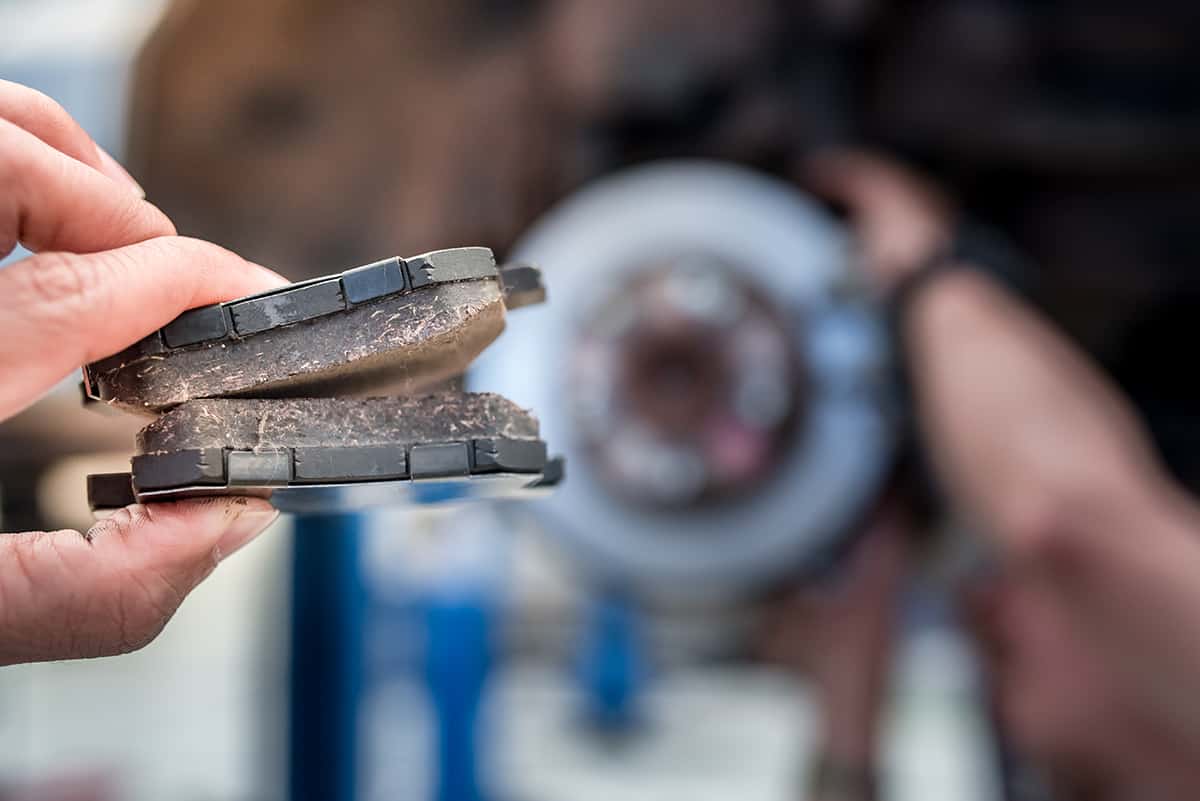
The signs of worn brake pads can help you address potential issues before they escalate.
1. Visual Cues
One of the simplest methods to check brake pad wear is a visual inspection:
- Thin Pads: If you look through the wheel spokes, you can usually see the outside pad pressed against the brake rotor. If it appears thin, it might be time for a replacement.
- Warning Grooves: Some brake pads have grooves that serve as wear indicators. Once these grooves disappear, it’s a sign to replace the pads.
2. Auditory Signals
Listen for these sounds that might indicate brake pad issues:
- Squeaking or Squealing: Persistent high-pitched noises when braking can be a sign of worn-out brake pads.
- Grinding Sound: This usually means the brake pads have worn down completely, and metal is rubbing on metal. Immediate attention is required.
3. Performance Issues
How your car behaves can also hint at brake pad condition:
- Decreased Responsiveness: If the brakes don’t seem as effective or the pedal sinks further to the floor, this can be a symptom of worn pads.
- Vibration: Pulsations or vibrations in the brake pedal might indicate uneven wear of the brake pads.
Choosing the Right Brake Pads
Selecting the right brake pads is a blend of understanding your vehicle’s needs, your driving habits, and the various options available in the market.
Factors to consider
Driving Conditions: Are you mainly city driving with frequent stops or more on highways? Some pads are better suited for city traffic, while others excel at higher speeds.
- Material Type: Different materials offer varied benefits. Organic pads are quieter, semi-metallic have good heat dissipation, and ceramic pads offer longevity and consistent performance.
- Vehicle Type: The weight and type of your vehicle, whether it’s a compact car, SUV, or truck, can dictate the most suitable brake pad type.
Installation and Compatibility
- Check Specifications: Always cross-reference the chosen brake pad model with your car’s make, model, and year. A perfect fit is paramount for optimal performance.
- Professional Installation: While DIY installation is possible, getting a professional to do it ensures proper fitment and peace of mind.
Brands and Recommendations
- Brembo: Known for high performance, these are often found in sports cars and high-end vehicles.
- Akebono: A popular choice for ceramic brake pads, they offer a good mix of performance and value.
- Wagner: With options for both organic and ceramic pads, they cater to a wide variety of vehicles and driving needs.
- EBC: Ideal for drivers looking for a performance edge, they offer a range of pads tailored to different driving styles.
